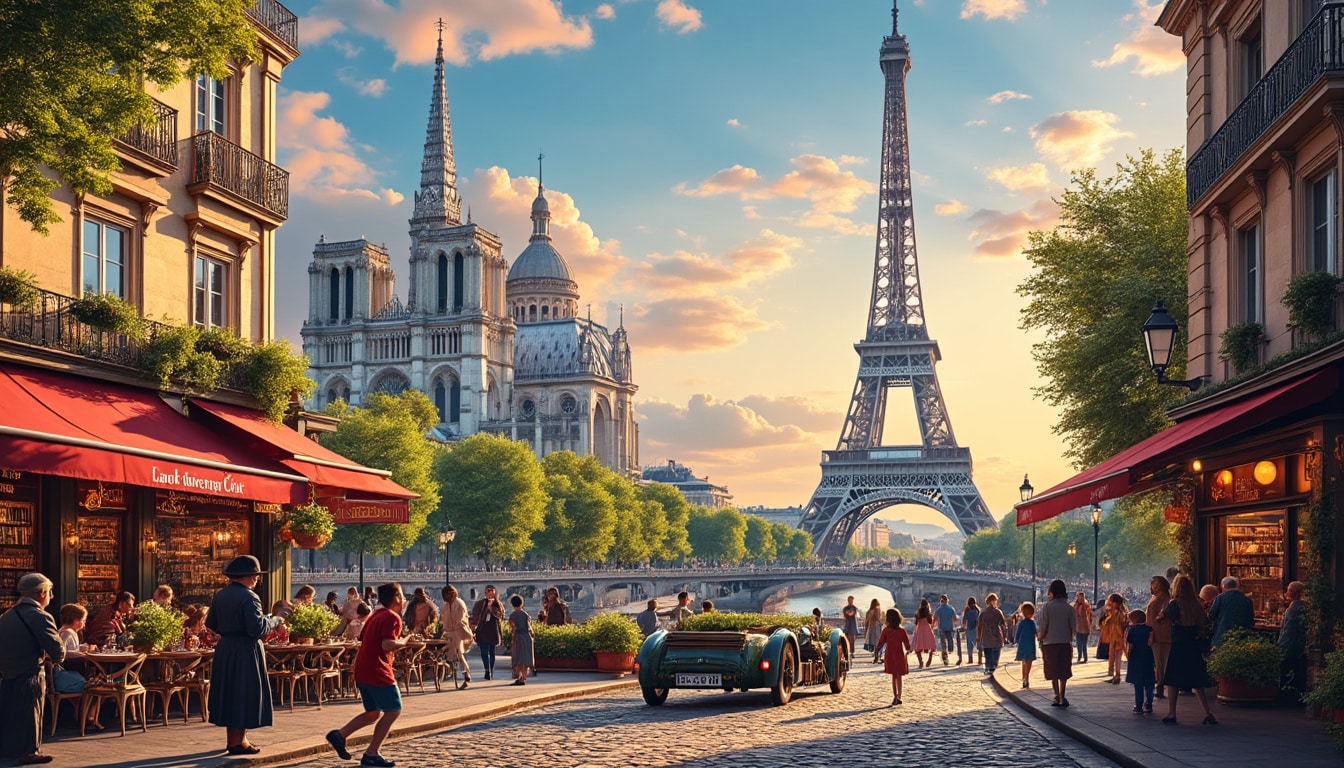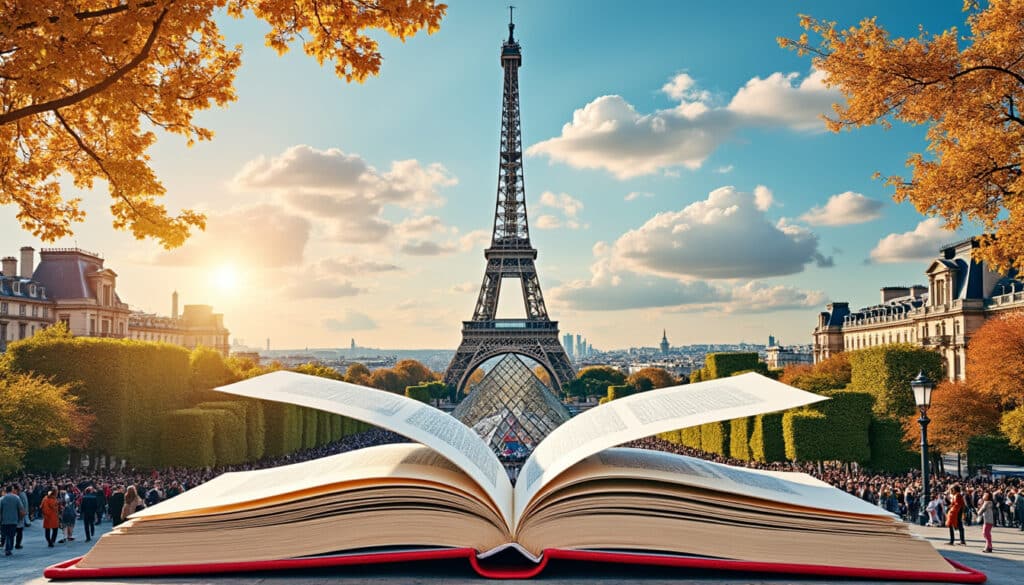The History of Paris is a captivating tapestry woven from a myriad of cultures, historical events, and architectural marvels. From its origins as a Celtic settlement to becoming a global epicenter of art and politics, Paris has transformed profoundly over the centuries. Each era left its indelible mark on this dynamic city, contributing to its current identity. As we explore the city’s past, we delve into the evolution of its iconic monuments, its pivotal role in historical revolutions, and its enduring charm as a nucleus of culture and innovation. Embark on this historical journey to appreciate the essence of Parisian Heritage and unravel the stories behind its timeless beauty.
The Celtic Foundations and Roman Influence on Paris
Paris, originally known as Lutetia, finds its earliest connection in the Iron Age when the Celtic Parisii tribe settled on the banks of the Seine around 250 BC. These early settlers laid the foundation for what would eventually become an epicenter of culture and history. Their strategic positioning along the river facilitated trade, making it a bustling hub even in ancient times. Archeological finds, such as gold coins and pottery, speak of a thriving trade route that linked the Parisii with other tribes and regions.
By 52 BC, as Roman legions under Julius Caesar advanced through Gaul, Paris witnessed its first significant transformation. The city’s rebirth under Roman dominion was marked by ambitious urban planning and the development of infrastructure. Lutetia started to resemble a classic Roman town with its amphitheaters, forums, and public baths. The Romans also introduced wine and olive oil, solidifying culinary trends that would influence Parisian gastronomy for centuries.
- 🍇 The Romans introduced wine culture to Paris.
- 🏺 Lutetia evolved with Roman architectural designs.
- 🗺 The city’s strategic location facilitated trade and growth.
However, the city’s inertia under the Roman Empire would not last indefinitely. As the empire began collapse, Paris faced numerous threats from Germanic marauders. This vulnerability ignited its first significant defensive strategies, as seen in the construction of walls around the Île de la Cité. By 357 AD, Emperor Julian established his governance there, momentarily restoring its prominence. Yet, even as Roman influence waned, the blend of Celtic and Roman cultural elements left a lasting imprint.
Paris was officially referred to as “Civitas Parisiorum” or “City of the Parisii” in the 4th century, and it was around this time Christianity began to gain a foothold. The martyrdom of Saint Denis, its first bishop, not only marked the beginning of Christian communities but also established foundational sites such as the basilica that bears his name today. This spiritual evolution signaled the city’s slow but steady transformation into a religious center.

Rediscovering Ancient Paris
Archeological projects in Paris, such as those conducted by the Institut national de recherches archéologiques préventives (INRAP), continue to uncover fragments of its history, providing insights into its ancient societies. For instance, findings near the Seine reveal remnants of early settlements, including tools and canoes, showcasing the resourcefulness and everyday life of its initial inhabitants. Tours such as the Historical Paris Tours allow enthusiasts to immerse themselves in this rich historical context, bringing to life the city that once was.
The Medieval Rebirth of Paris
As the Roman influence receded, a new era dawned with the advent of the Frankish kings. By 508 AD, Clovis I, the King of the Franks, made Paris his capital, laying the groundwork for its growth into Europe’s major urban center. During the early medieval period, Paris became synonymous with religious authority, with the construction of the Notre Dame Cathedral beginning in 1163—a testament to both spiritual dedication and architectural ingenuity.
The bustling activity of the medieval period saw Paris burgeon into a scholastic capital. The establishment of the University of Paris around 1150 distinguished it as a center of intellectual thought. Revered figures such as Thomas Aquinas and Albertus Magnus lectured here, giving rise to a vibrant community of scholars and philosophers. The Latin Quarter became the beating heart of academia, fostering a culture that prized education and intellectual discourse.
- 📚 Paris developed into a beacon of learning.
- ⛪ Notre Dame and other religious structures dominated the skyline.
- 🔮 Artists and philosophers converged in the Latin Quarter.
Paris was not immune to strife during these transformative years. The 14th century brought an onslaught of calamities, including plagues and the Hundred Years’ War, diminishing its population and slowing growth. Nevertheless, the city’s resolve through adversity underscored its endurance. The elegance of gothic structures, complemented by the emerging beauty of the Sainte-Chapelle, marked a cultural zenith where faith and artistry intertwined in public and private life.
Exploring Medieval Paris Today
Contemporary Paris offers a window into its medieval past through locations like Le Marais and vintage districts. The Gothic architecture that punctuates the cityscape stands as a reminder of its historical resilience. Visitors exploring the Marais district can indulge in its preserved streets, offering glimpses of an era characterized by architectural splendor. Walking tours often highlight these historical treasures, allowing one to appreciate both their aesthetic and historical significance.
The Renaissance and Beyond: Parisian Cultural Flourish
The dawn of the Renaissance ignited a cultural and architectural renaissance within Paris, with monarchs like Francis I, who were determined to transform Paris into the epitome of French royal splendor. The shift toward Renaissance architecture saw the introduction of symmetrical lines and ornate façades, best exemplified by the refurbished Louvre, transforming it from a medieval fortress into a comprehensive art repository.
During this transformative period, Paris cemented its reputation as a hub of arts and letters. The opening of institutions like the Collège de France in 1530 marked Paris’s ascent as an intellectual powerhouse, promoting not just the humanities, but an embrace of innovative thinking across disciplines. Literature flourished with writers such as Rabelais and Montaigne, whose works reflected the changing tides of thought and culture.
- 🎨 Paris became a canvas for artistic innovation.
- 📖 Literature thrived, echoing the era’s intellectual shifts.
- 🏛 The Louvre transitioned into the art sanctuary it is today.
The era was also marked by tumultuous religious upheavals. The French Wars of Religion left lasting scars, culminating in events like the St. Bartholomew’s Day Massacre. These conflicts were underscored by social and religious tensions that Paris had to navigate carefully. Despite these challenges, the Renaissance era forged ahead, transforming the cityscape and enriching its cultural legacy.
Artisan Legacy and Craftsmanship in Paris
The legacy of Renaissance artisans remains palpable today, particularly in Montmartre, where artists continue to craft masterpieces inspired by the city’s legacy. Montmartre Artisans represent the continuum of creativity that has flowed through Parisian streets for centuries. Art and craftsmanship tours highlight these artisans, providing rare insights into the contemporary interpretations of traditional Parisian crafts.
Revolutions and Redefinition: Paris in the Modern Era
The upheavals of the 18th and 19th centuries carved much of Paris’s current political and social framework. Amidst the Enlightenment, Paris emerged as a crucible of revolutionary thought, catapulting itself into the limelight as the epicenter of the French Revolution in 1789. The storming of the Bastille and subsequent turbulent years cemented its status as a symbol of change and renewal.
Such revolutions gave birth to iconic landmarks and institutions, including the Champs-Elysées. This boulevard, originally laid out in the 17th century, became a central axis of fashionable Parisian life and a stage for fashion and society’s evolution. The Champs-Elysées Fashion houses took root here, embellishing the city with the glamour and elegance it is known for globally.
- 🔨 The Revolution transformed both political and architectural landscapes.
- 🌃 Paris continued to be a beacon of modern thought and ideals.
- 👗 Champs-Elysées emerged as a cultural and fashion capital.
The 19th century saw the resurrected cityscape, courtesy of Baron Haussmann’s renovation under Napoleon III. His work set the stage for Paris to become the “City of Light,” characterized by grand boulevards and parks like the Versailles Gardens, offering respite amid urban development. Haussmann’s influence is still felt today in Paris’ wide avenues and airy parks, embodying functionality and beauty.
Heritage Walks and Modern DNA
Walking tours around Arc de Triomphe Memorabilia and the grand structures along the Champs-Elysées form part of today’s Parisian experience. These landmarks continue to enthrall visitors while narrating tales of revolutionary zeal and aesthetic evolution. For those eager to explore, a Heritage tour uncovers the layers of history nestled within every corner of Paris, creating a tapestry that tells the city’s enduring tale.
The Contemporary Charm and Global Influence of Paris
In the 20th and early 21st centuries, Paris has continued to evolve and adapt while maintaining its core identity as a beacon of culture and innovation. World Wars and economic upheavals shaped its landscape, but Paris remained steadfast in its pursuit of beauty and art. The advent of new museums and cultural institutions, such as the Centre Pompidou, emphasize its commitment to pioneering modernism and preserving artistic heritage.
Influential figures such as Coco Chanel and Christian Dior revolutionized fashion, making Paris synonymous with elegance and style. Champs-Elysées Fashion brands are integral to its allure, drawing millions from around the globe to witness extravagant fashion weeks and explore classic couture. These enterprises are more than economic cornerstones; they are pillars of cultural distinction.
- 🚀 Paris continues to innovate while honoring its past.
- 🎭 Cultural institutions cultivate a dialogue between tradition and modernity.
- 👠 Fashion remains a defining element of Parisian life.
The globalization era brought challenges and opportunities, inspiring initiatives like the Grand Paris project to revitalize and expand the capital’s infrastructure. This ongoing endeavor aims to bridge Paris’s rich historical legacy with future aspirations, ensuring its place as a leading metropolis in an interconnected world, linking culture, economy, and singularity into its urban fabric.
A Living Museum
Today, Paris resonates as a living museum where each street and building whispers stories of times gone by, making it a must-visit on historical tours and a continual source of inspiration for artists and dreamers. From the iconic Eiffel Tower to the soulful notes of a Montmartre street musician, Paris offers a nuanced meditation on the passage of time and the timeless allure of the City of Light.
FAQ: Unraveling Paris’ Historical Mystique
- 📜 What are the origins of the name Paris? The name Paris is derived from its early settlers, the Parisii tribe, who occupied the region around 250 BC.
- 🗼 Why is Paris referred to as the “City of Light”? This nickname comes from both its role during the Age of Enlightenment and its early adoption of street lighting.
- 🎭 How did the French Revolution impact Paris? The Revolution transformed Paris into a symbol of liberty and modern governance, influencing its architectural and cultural landscape.
- 👗 How does Paris influence global fashion? As a fashion capital, Paris leads innovation and sets trends, home to iconic maisons like Chanel and Dior.
- 🎨 What is the significance of the Louvre? Originally a royal palace, it’s now the world’s largest museum, housing treasures from throughout history, emphasizing Paris’s artistic legacy.
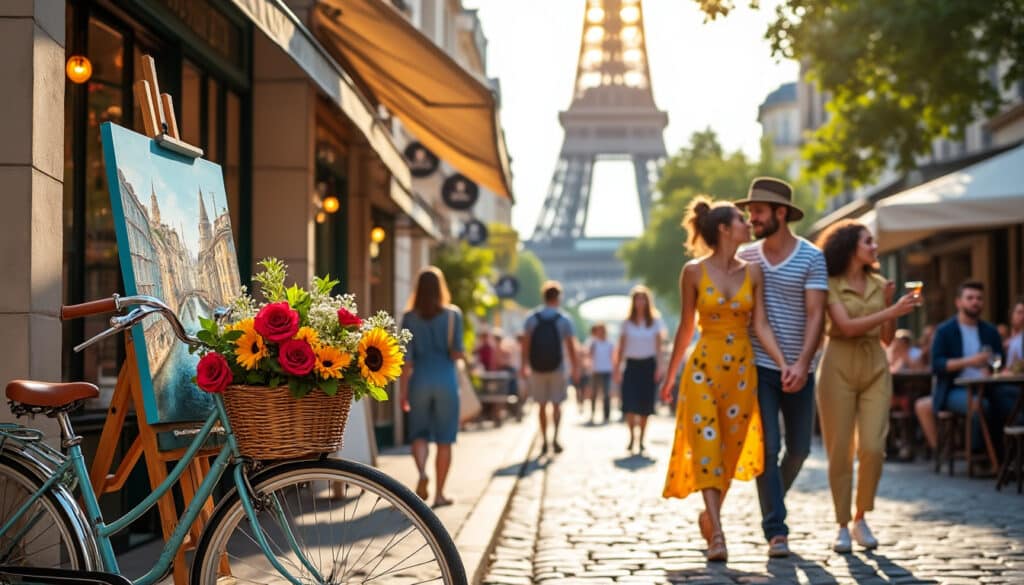
Fun Facts & Curiosities About Paris
Paris, often lauded as the City of Light, is famous for its iconic landmarks like the Eiffel Tower, Notre Dame Cathedral, and the Louvre Museum. Yet, there exists a treasure trove of fascinating facts and curious anecdotes that make Paris…
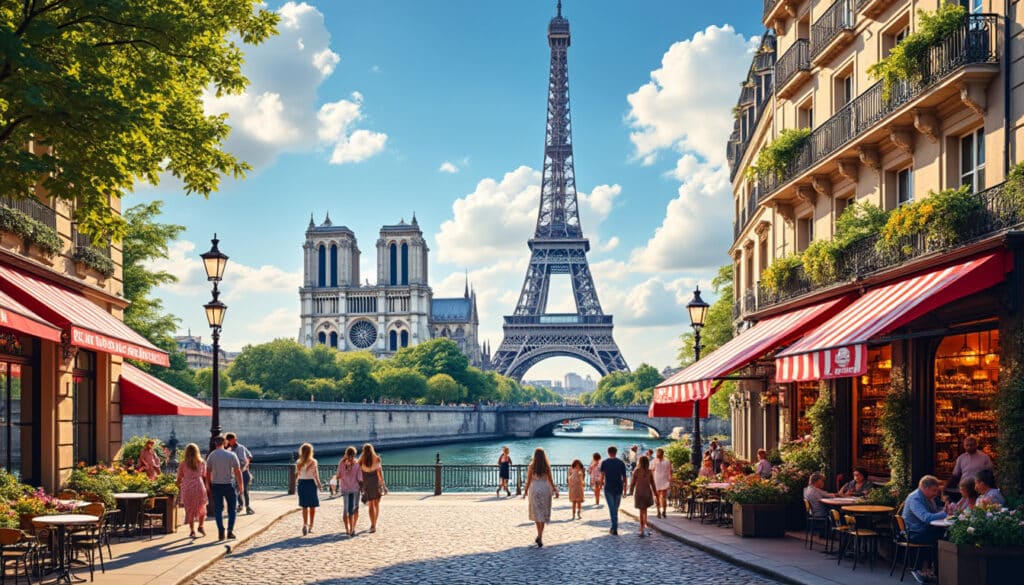
Architecture and urban features of Paris
Paris, the enchanting capital of France, is synonymous with architectural elegance, offering a tapestry of styles that narrates the story of the city’s evolution through the ages. From the towering Gothic structures to the refined lines of Haussmannian facades, each…
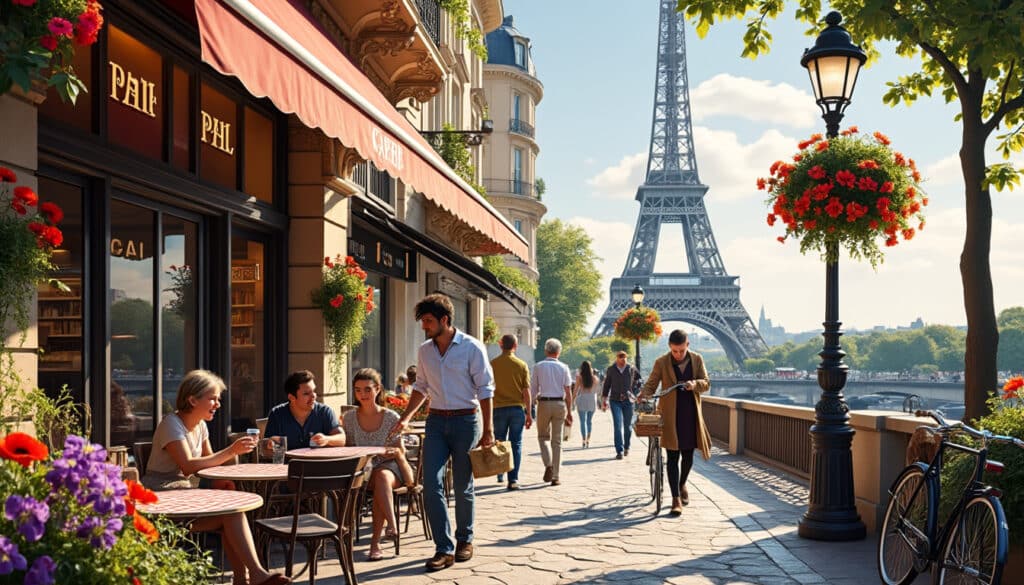
Daily life in Paris is a fascinating blend of art, culture, history, and modernity. From the moment you wake up to the delightful aroma of freshly baked baguettes at your local boulangerie, to the evening’s social buzz at chic bars…
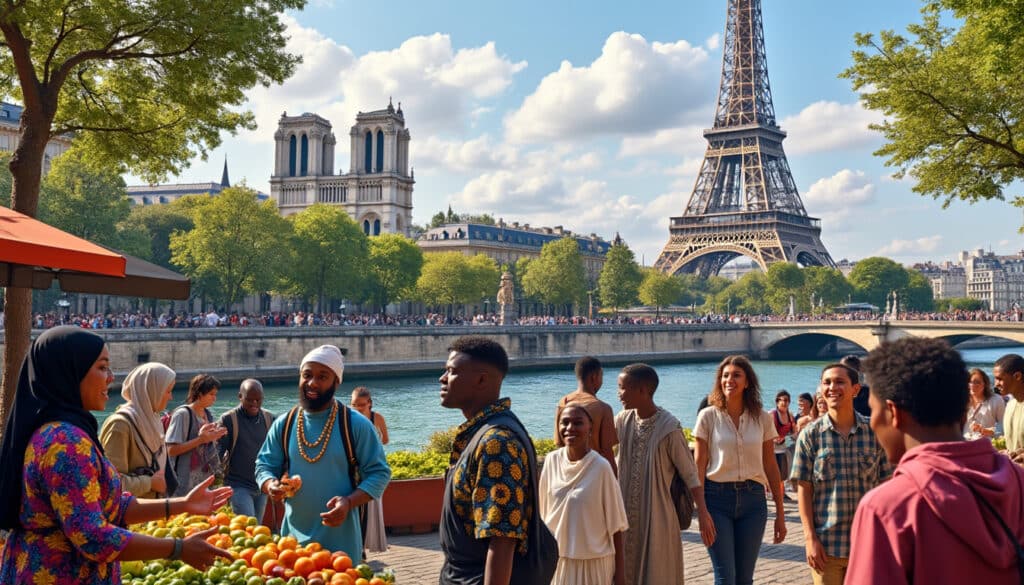
Demographics and geography of Paris
Paris, the City of Lights, is not just renowned for its breathtaking landmarks and artistic flair but also for its rich demographic tapestry and fascinating geography. The capital of France is a bustling metropolis that has seen significant transformations over…
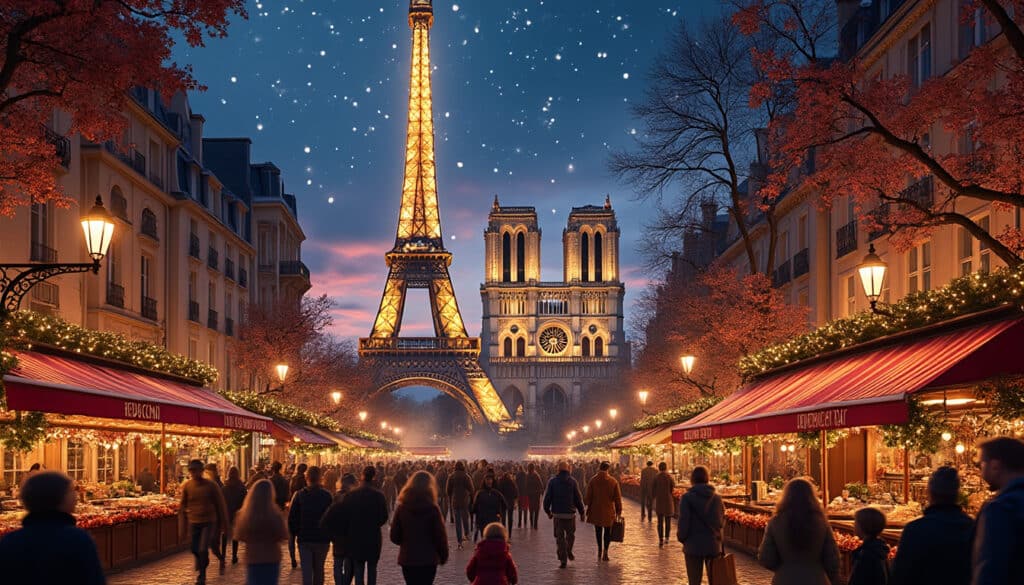
Holidays and celebrations in Paris
Paris, the City of Lights, is known for its rich history, vibrant culture, and iconic landmarks. But beyond the Louvre and the Eiffel Tower lies a tapestry of celebrations that bring the city to life throughout the year. From religious…
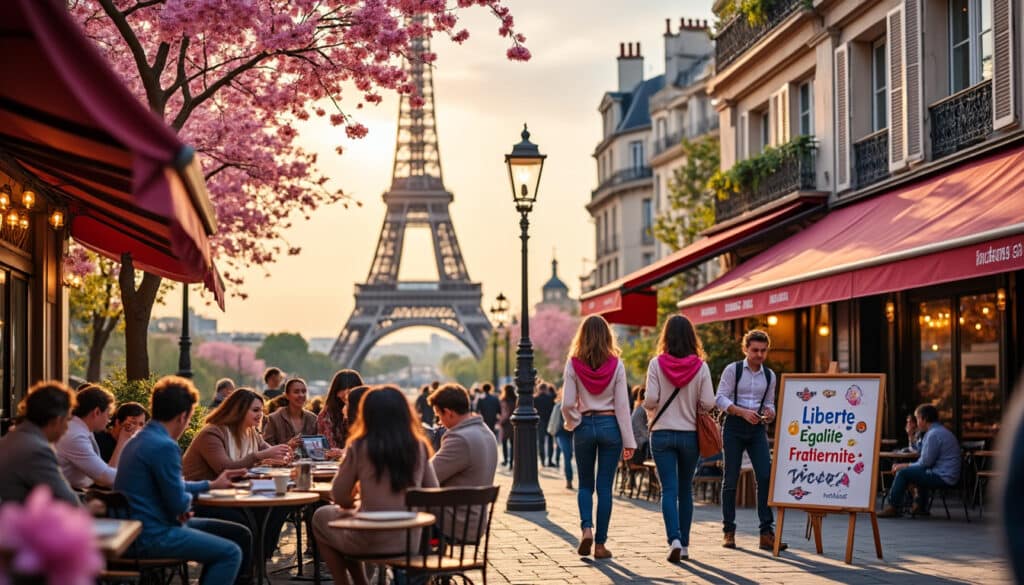
Language and spelling of Paris
Paris, the iconic City of Lights, is not only a hub for art, history, and fashion but also a melting pot of languages and cultures. For many travelers and expatriates, understanding the linguistic nuances of Paris is as essential as…
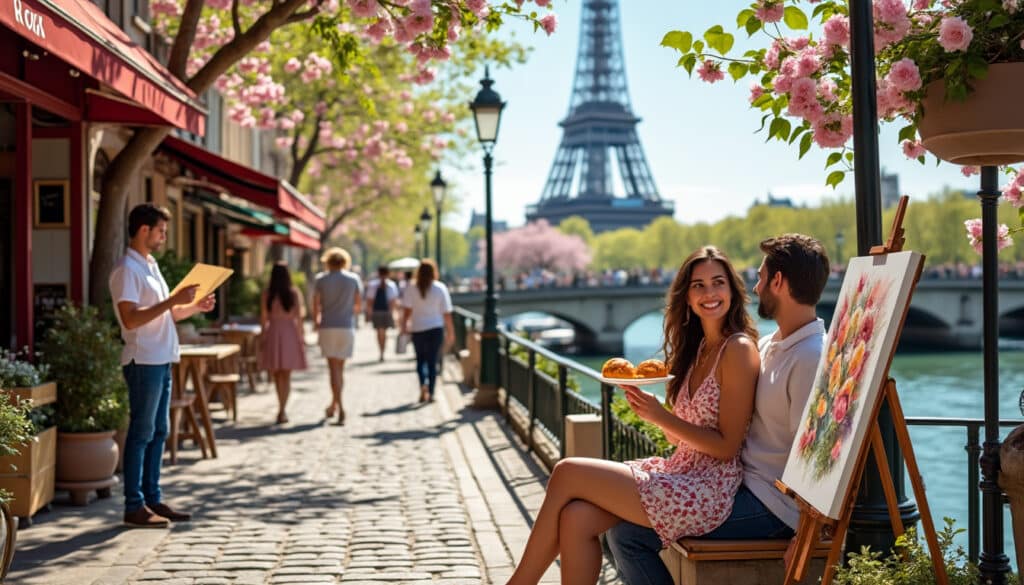
Local tips for tourists in Paris
Paris, often referred to as the “City of Light,” is a timeless destination that attracts millions of tourists every year. However, truly experiencing Paris as a local can unravel a different side of this enchanting city, one that is filled…
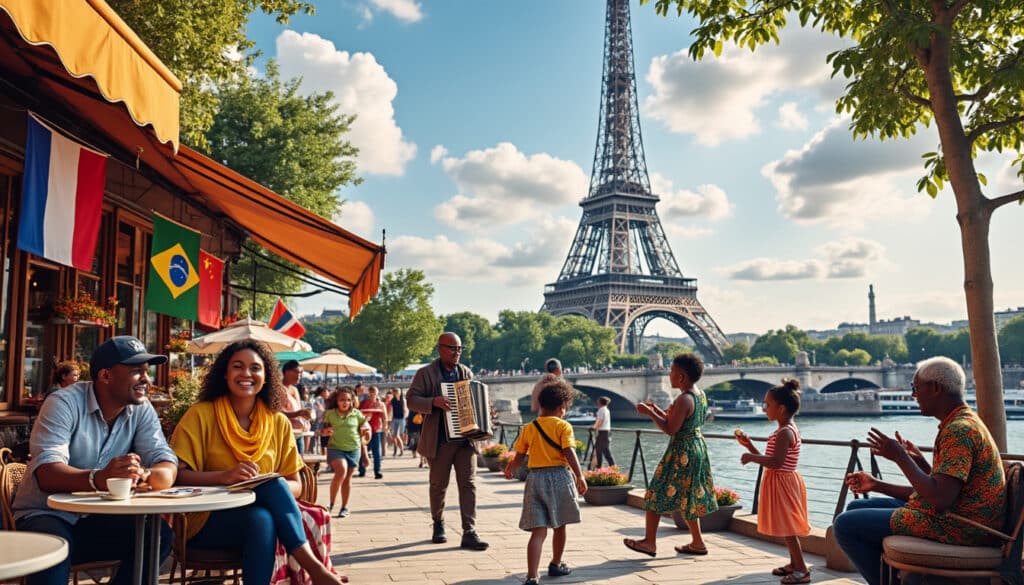
Names, flags, and identity of Paris
Paris, the City of Light, is not only celebrated for its iconic monuments such as the Eiffel Tower, but it is also a hub of cultural richness and historical depth that goes beyond its visual grandeur. From its age-old symbols…
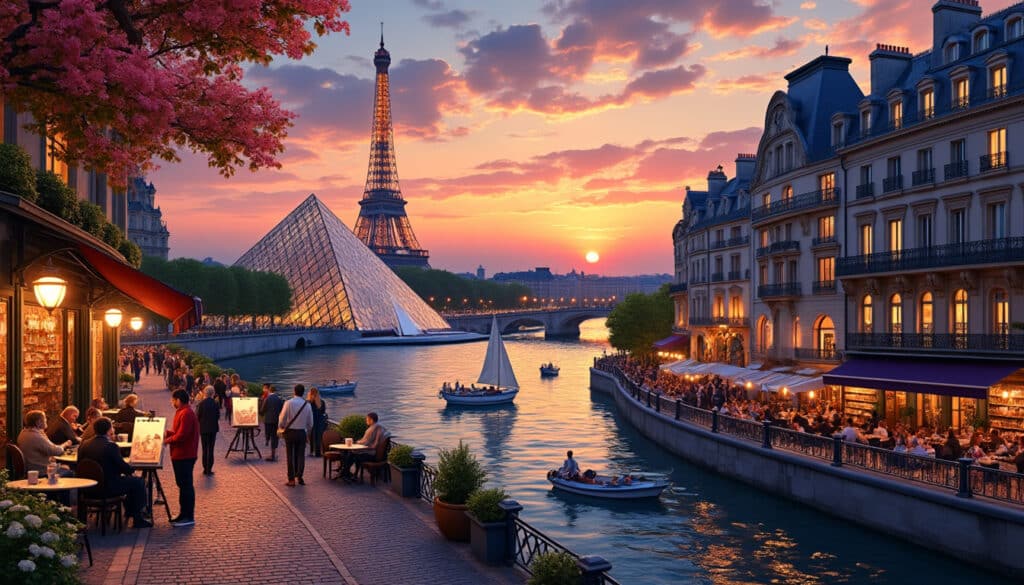
Reputation and identity of Paris
Paris, the illustrious capital of France, has long stood as a beacon of art, culture, and history, drawing millions of visitors annually who are captivated by its unique charm. Renowned as the “City of Light,” Paris is celebrated for its…
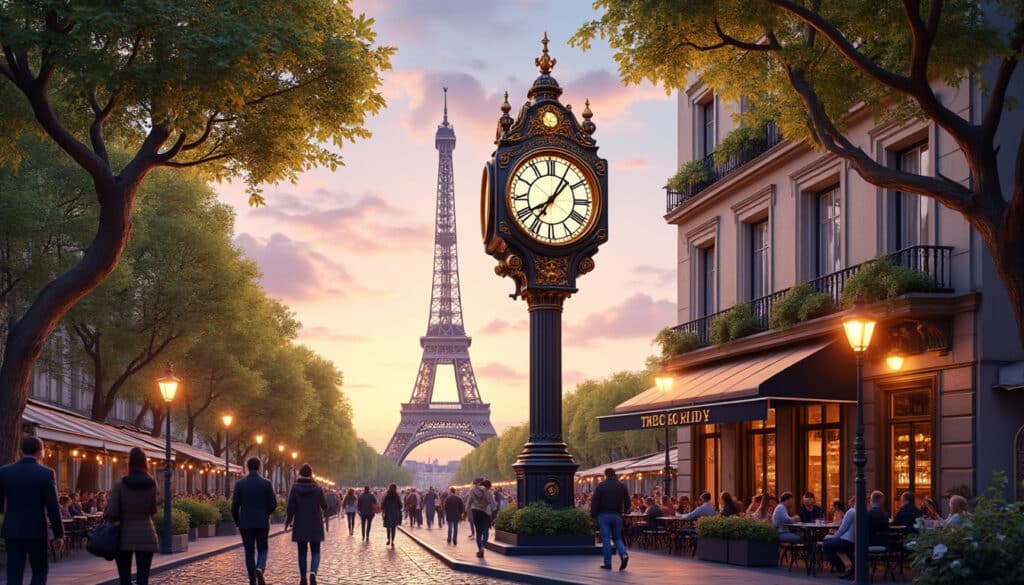
The vibrant city of Paris, France, is not only known for its rich culture, breathtaking architecture, and exquisite cuisine, but it also operates on a unique time schedule that visitors and residents must navigate. Understanding the time and time zone…
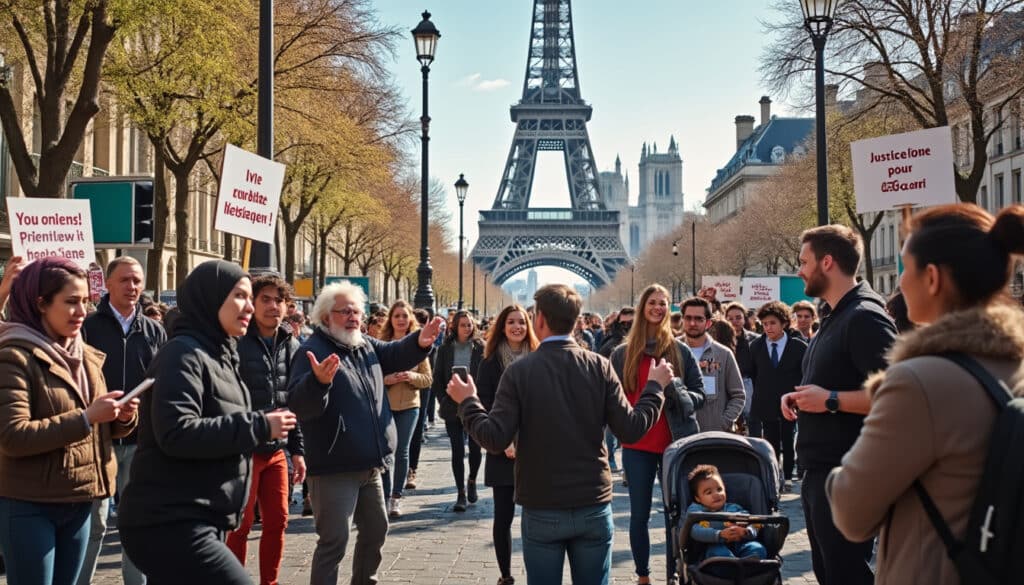
Unusual facts and social issues in Paris
Paris, with its timeless allure, is often depicted through its elegant boulevards, romantic cafes, and iconic landmarks like the Eiffel Tower. Yet, beneath this postcard-perfect exterior lies a tapestry of lesser-known stories and issues that paint a more complex portrait…
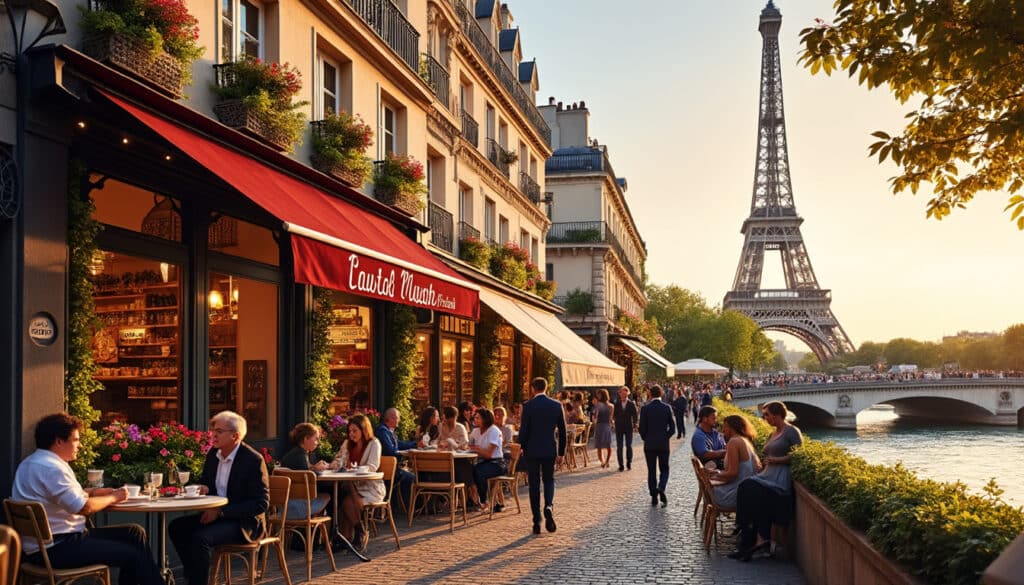
What does Paris look, smell, feel like?
Paris, often referred to as the “City of Light,” is renowned for its stunning architecture, rich history, and artistic heritage. This vibrant city is a haven for art enthusiasts and gastronomes alike. Its streets are lined with magnificent buildings, offering…

